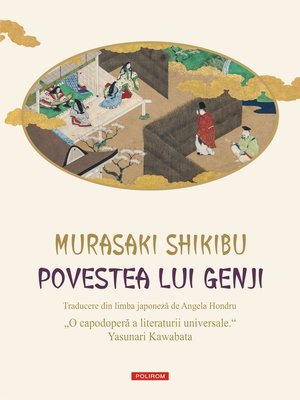The modern novel, according to many, began with Robinson Crusoe, by, published in 1719. Or, as other scholars have suggested, by Cervantes, published 1605. But the truth of the matter is, as far as we know at this time, the first novel was written 700 years before Robinson Crusoe. It came not from the west, but from the east.
Tale Of Genji Seidensticker
I write ‘as far as we know’ because their remains the possibility, remote though it is, that a manuscript of some type could yet be discovered. The country where the novel originated is Japan. And the author of the first novel called was a woman. And she was the first to use a pen name.
The Tale of Genji 源氏物語 [Genji Monogatari] Murasaki Shikibu Translated by Edward G. This web edition published by eBooks@Adelaide. By Gustav Heldt Access. PDF HTML; Export citation. 10 - Early Heian court tales. Mostow Access. PDF HTML; Export citation. 11 - Genji monogatariand its reception.
She did not intend, nor chose, to use her pen name of Murasaki Shikibu. She was, it is believed, to be a lady-in-waiting in the Heian Court. It was considered rude to record the names of women who came from noble families, though some exceptions were made, primarily for a princess or an emperor’s wife or companion.
Their is controversy of how the novel should be presented. The original translation was done in six volumes, but subsequently it has been reduced to 54 chapters.
The feeling by Edward Seidensticker was that 54 chapters are the original text, that the cut chapters are not of the same narrative. Murasaki began her novel around 1002.

Genji Seidensticker
The Japanese, like the Chinese at the time, did not regard this form of writing worthy. Poetry, history, and philosophy were the genres one wrote in. Women could write diaries or vernacular tales and Murasaki essentially merged both in Tales of the Genji. I have not read the original translation.
I have the Seidensticker abridged version. And reading her novel I found myself amazed how modern it feels. Too bad we don’t know her real name. Sources used for this blog.